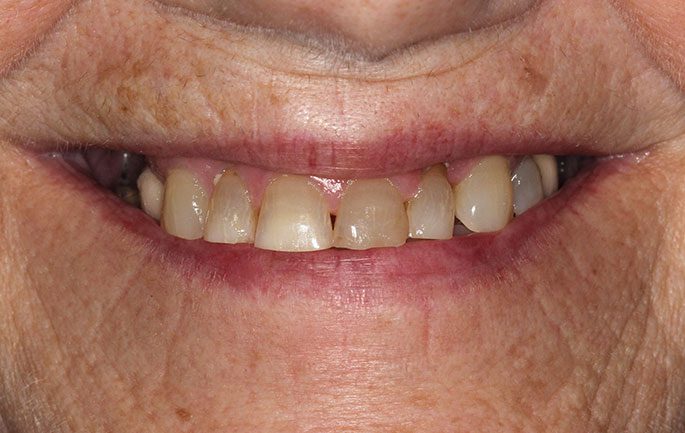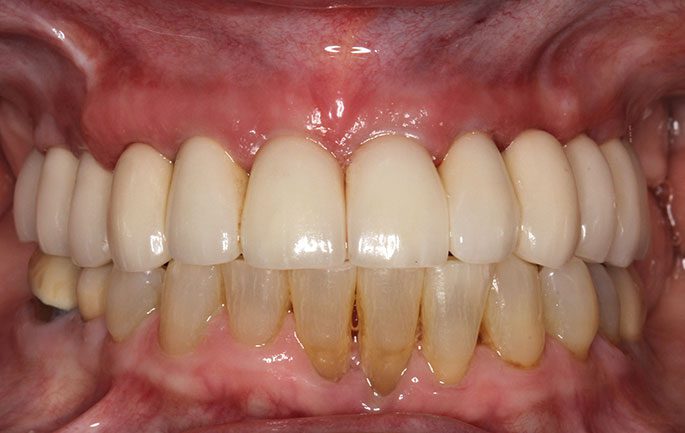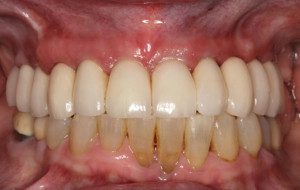
1 of 10
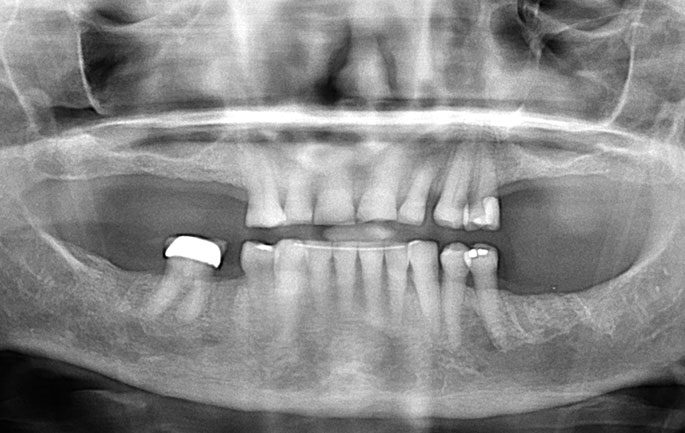
Pre-treatment x-ray of patient missing all upper back teeth. The remaining upper front teeth are loose. Attempting to restore these existing teeth would result in the patient have very short tern success and would not address the missing back teeth unless she wanted to wear an upper removable prosthesis. The decision was made to remove all teeth, place immediate implants and an immediate fixed temporary bridge.
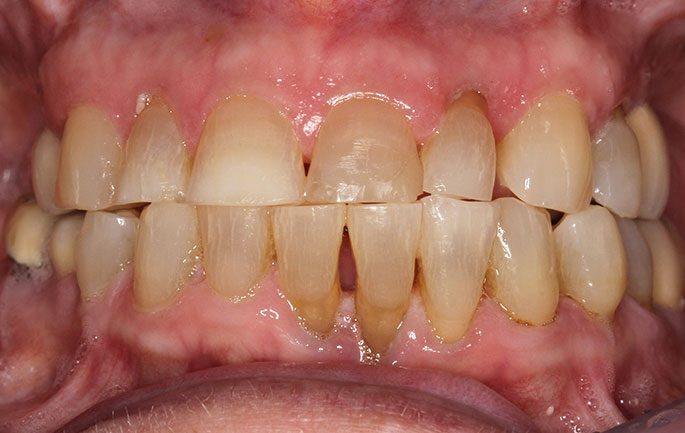
Close up view of the teeth. After years of wear the front teeth are short and touch the lowers in an edge to edge arrangement. This is called an “acquired Class 3” bite. This is a common scenario when back teeth are lost and the patient grinds. This is caused by the loss of tooth structure combined with bite collapse (loss of vertical dimension). The patient wanted longer, prettier teeth so this is what we planned.
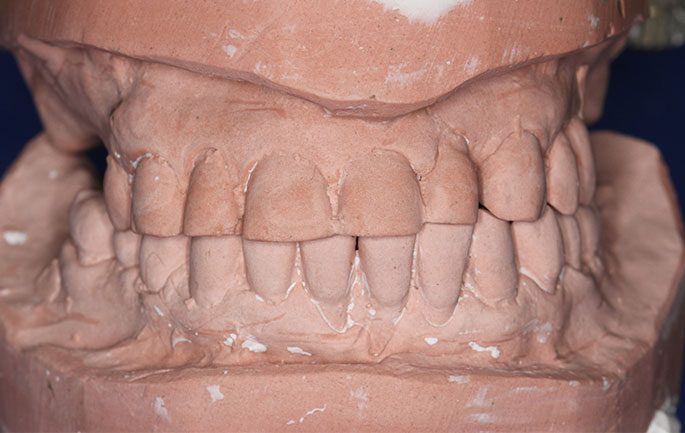
Using diagnostic casts (study models) placed on an articulator (bite simulator) we can begin the preparation of her new smile. The dental implant doctors do these work-ups and wax-ups, ourselves. We believe the best outcomes are done through great planning, so, we do much of this, ourselves.
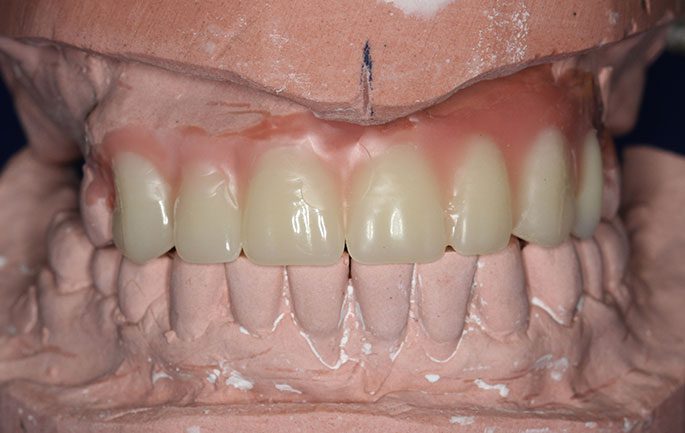
By replacing the patient’s teeth using denture teeth and wax, a new smile can be developed in the laboratory. This information can be transferred to the temporaries using a template made from the wax-up.
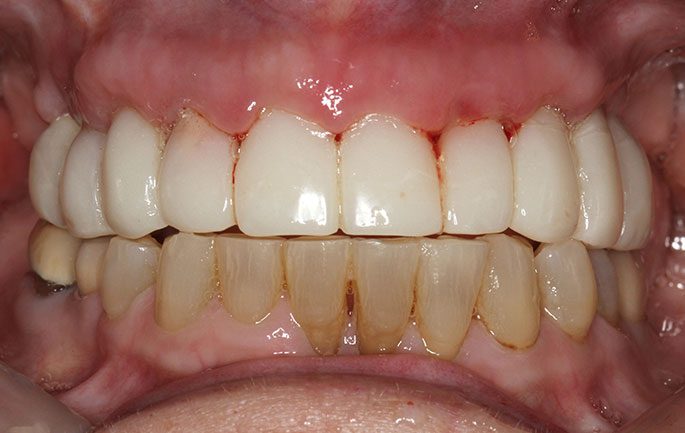
Immediate temporary implant bridge. These new teeth are whiter, longer and have the proper overlap of the lowers thereby restoring all the missing tooth structure from the past. This transformation can happen in just a few hours at the first surgery.
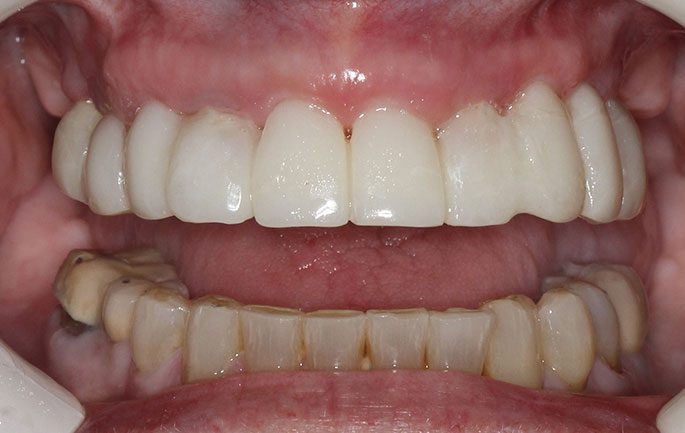
Two weeks after implant surgery and placement of the temporary bridge. Note the beautiful, healthy tissue contours.
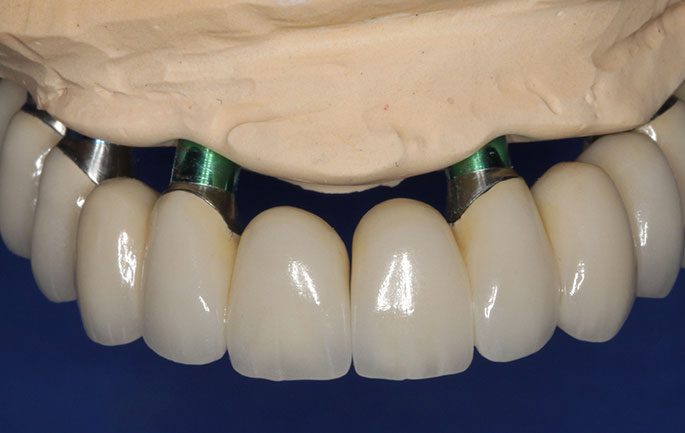
The permanent bridge on the master model returned from the lab. These were fashioned after the temporaries that were given at the surgery. Proper planning and execution resulted in and easy message to convey all the necessary information to the laboratory.
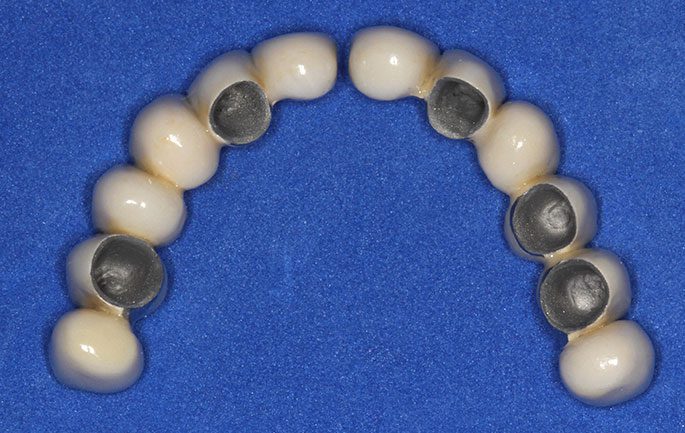
In this case, two individual implant bridges were fabricated. In large implant cases like this one we prefer to do at least two and sometimes three or four individual bridges per jaw. It is nearly impossible for the laboratory to fabricate a well-fitting bridge that for more than about five teeth. Also, when doctors attempt to make excessively long bridges (7 or more teeth) or one bridge for an entire arch it increases the chances of catastrophic failure. Imagine a 12-unit bridge where one front tooth cracks. That one crack is now a 12-unit problem. After 25+ years of implant dentistry we have concluded that shorter bridges are much better for everyone.

